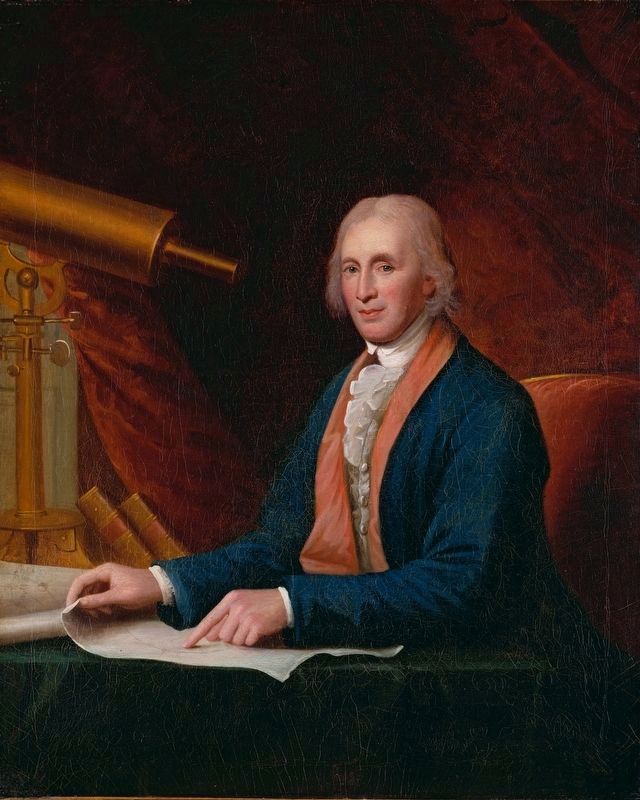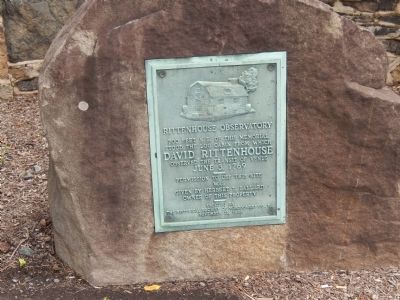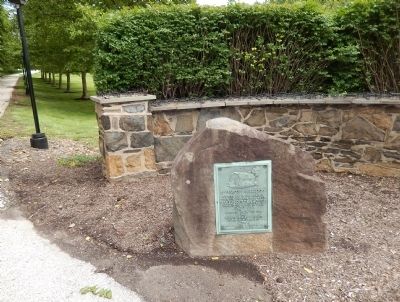East Norriton Township near Eagleville in Montgomery County, Pennsylvania — The American Northeast (Mid-Atlantic)
Rittenhouse Observatory
Erected 1938 by The Historical Society of Montgomery Co. PA.
Topics. This historical marker is listed in these topic lists: Air & Space • Science & Medicine. A significant historical date for this entry is June 3, 1817.
Location. 40° 9.389′ N, 75° 22.102′ W. Marker is near Eagleville, Pennsylvania, in Montgomery County. It is in East Norriton Township. Marker is on West Germantown Pike. The marker is near the entrance to Valley Forge Medical Center Hospital. Touch for map. Marker is at or near this postal address: 1026 W Germantown Pike, Norristown PA 19403, United States of America. Touch for directions.
Other nearby markers. At least 8 other markers are within 3 miles of this marker, measured as the crow flies. Rittenhouse Farm (here, next to this marker); a different marker also named Rittenhouse Farm (approx. 1½ miles away); West Norriton Township World War Memorial (approx. 2 miles away); American Alligator (approx. 2.2 miles away); a different marker also named American Alligator (approx. 2.2 miles away); North American River Otter (approx. 2.2 miles away); Donald Kimmel (approx. 2.3 miles away); Bison (approx. 2.3 miles away).
Also see . . .
1. David Rittenhouse - Wikipedia. “Rittenhouse used the observations to calculate the distance from Earth to the Sun to be 93-million miles. (This is the approximate average distance between Earth and the Sun.) The published report of the transit was hailed by European scientists, and Rittenhouse would correspond with famous contemporary astronomers, such as Jérôme Lalande and Franz Xaver von Zach.” (Submitted on July 2, 2015, by Bill Pfingsten of Bel Air, Maryland.)
2. David Rittenhouse and the Transit of Venus. “In 1768, Rittenhouse was elected to the American Philosophical Society and, based on calculations which he made, the Society made plans to observe the transit of Venus which was calculated to take place in 1769. The plans consisted of setting up observatories on three sites from which observations would be made. Rittenhouse built one of these observatories at his home as well as constructing most of the astronomical instruments to be used in it. It is believed that he made the first telescope in the United States as one of these instruments. The transit of Venus occurred on 3 June 1769. Rittenhouse’s great excitement at observing the infrequently occurring transit of Venus resulted in his fainting during the observation due to illness during his extensive and most accurate preparations. Lying on his back beneath the telescope, trained at the afternoon sun, he regained consciousness after a few minutes and continued his observations.” (Submitted on May 28, 2019.)
Additional keywords. astronomy

Oil on canvas by Charles Willson Peale, 1796
3. David Rittenhouse (1732-1796)
David Rittenhouse was a renowned American astronomer, inventor, mathematician, surveyor, scientific instrument craftsman, and public official. This image obtained via Wikipedia Commons. The original oil painting is in the National Portrait Gallery, Washington DC.
Credits. This page was last revised on February 7, 2023. It was originally submitted on July 1, 2015, by Don Morfe of Baltimore, Maryland. This page has been viewed 800 times since then and 92 times this year. It was the Marker of the Week June 2, 2019. Photos: 1, 2. submitted on July 1, 2015, by Don Morfe of Baltimore, Maryland. 3. submitted on May 28, 2019, by J. J. Prats of Powell, Ohio. • Bill Pfingsten was the editor who published this page.

